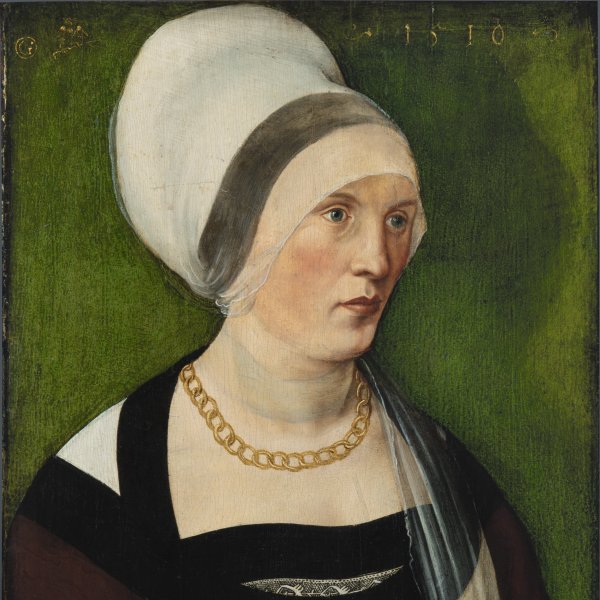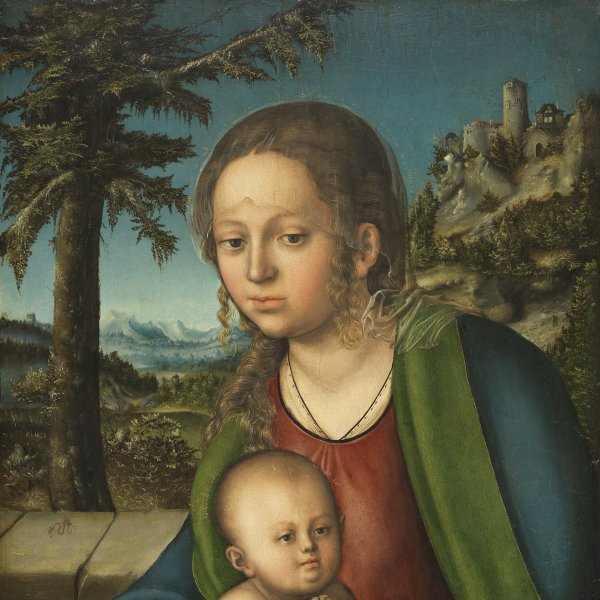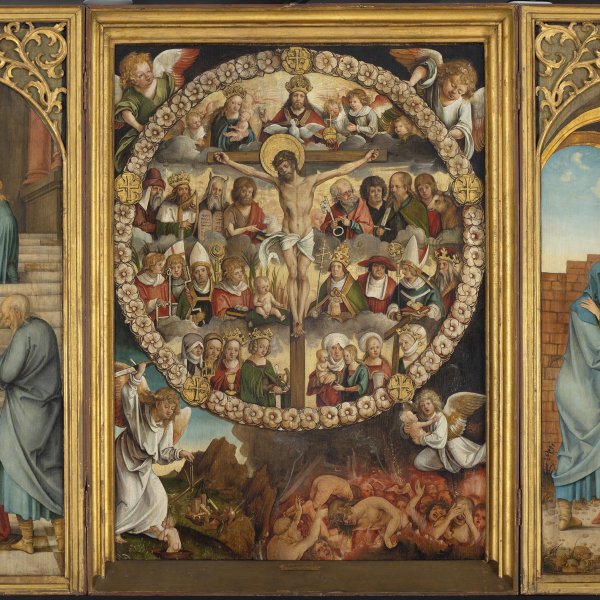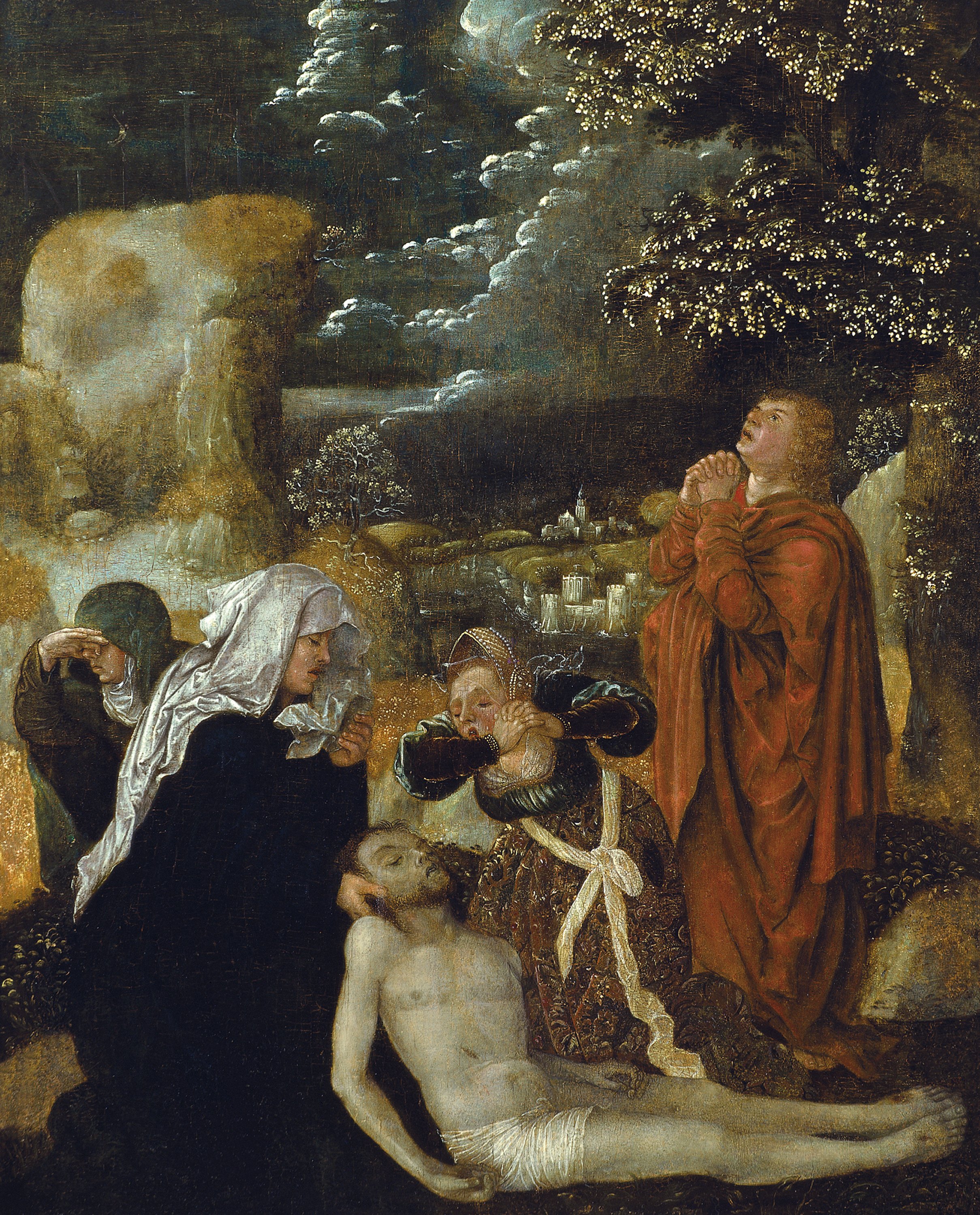The Lamentation
Ulrich Apt the Elder was an important 16th-century German painter who worked in the city of Augsburg. It seems that he travelled to the Low Countries and played a significant role in introducing Netherlandish art into Germany. Together with his two sons, Apt ran a flourishing workshop and the extremely close nature of their collaboration has made it difficult to distinguish their hands. Also working in Augsburg at this time but in a notably different style were Hans Holbein the Younger and Hans Burgkmair, whose work represents the Italianate trend. In this panel Apt locates the dead Christ in the centre of the composition, his body resting on the Virgin kneeling behind him. To his right is Mary Magdalen, whose sumptuous dress and dramatic pose conform to the Netherlandish manner of depicting this figure. On the right of the composition is Saint John in prayer, dressed in a striking red tunic and with his gaze fixed on the ground. On the left is one of the Holy Women whose gesture of covering her nose with her hand perfectly conveys the state of Christ’s corpse. In the landscape background are the city of Jerusalem and Mount Golgotha with the three crosses.
Ulrich Apt the Elder had a flourishing workshop in Augsburg, where he competed with those of Hans Holbein the Elder and Hans Burgkmair. Apt’s three son — Jacob, Ulrich the Younger and Michael — are recorded as working in their father’s studio. The uniform nature of the family’s output, also evident in the work of their assistants, has made it difficult to identify their individual hands and styles. Among the works attributed to Apt the Elder are the two wings of a triptych, one in the Musée du Louvre and the other in the Karlsruhe Museum, as well as a signed portrait in the Liechtenstein Collection in Vaduz. These three paintings have been compared with the present small oil with regard to the conception of the figures and the colours. Other similarities have been detected in the clothes and draperies and the way in which the paint is applied to the surface.
In this scene from the Passion, Apt places the dead Christ in the foreground, lying on the ground and supported by Mary who kneels at his side. Saint John, dressed in a striking, bright red robe, prays with raised, clasped hands. The composition is completed with a dramatic Mary Magdalen in the centre, richly attired and making a striking gesture, as well as one of the holy women on the left who holds her nose in a clear reference to the state of the body. The figure of the Magdalen, in particular her headdress and dress, are based on Netherlandish models. The artist set the episode in a landscape with the city of Jerusalem in the centre and Mount Golgotha with the three crosses on the left. The darkness of the sky, the landscape and the tree framing Saint John all contrast with the colours used for Golgotha and with Christ’s pallor. Lübbeke drew attention to the distinctive way in which Apt constructed the highlights on the leaves of the foreground tree.
The panel is strikingly similar to another panel on the same subject attributed to the Master of Augsburg and associated with the Apt family in the Bayerische Staatsgemäldesammlungen Staatsgalerie in Augsburg.
Mar Borobia








